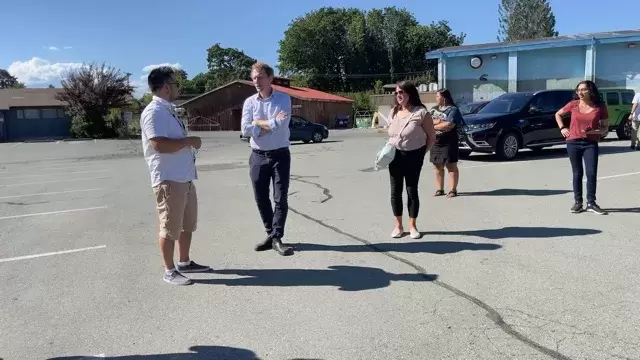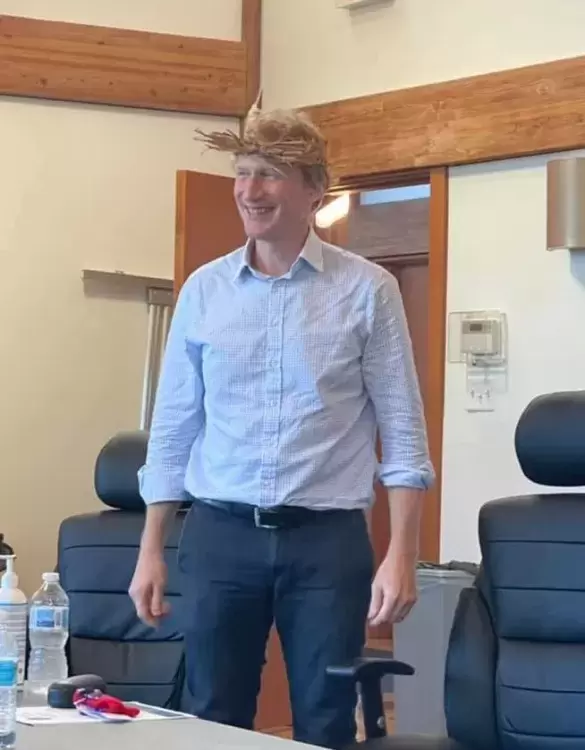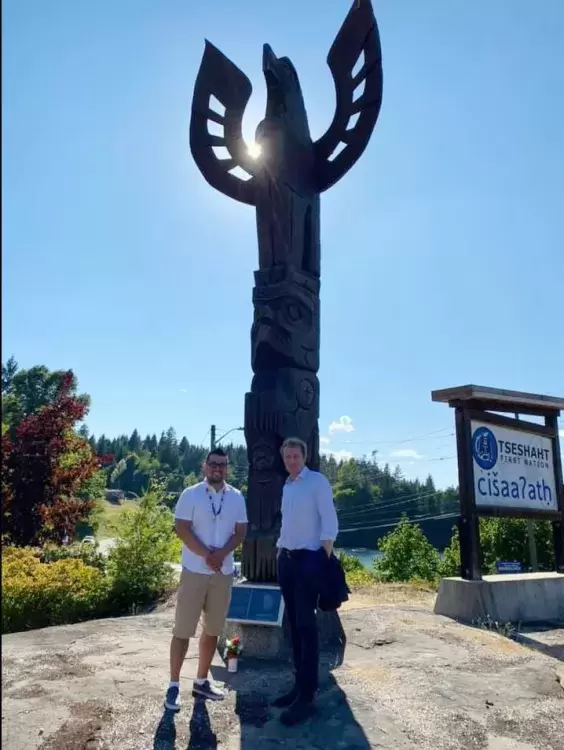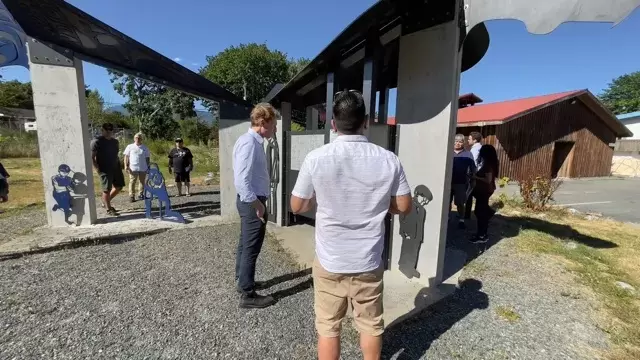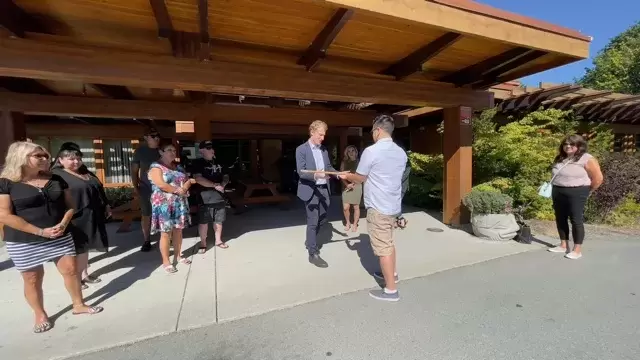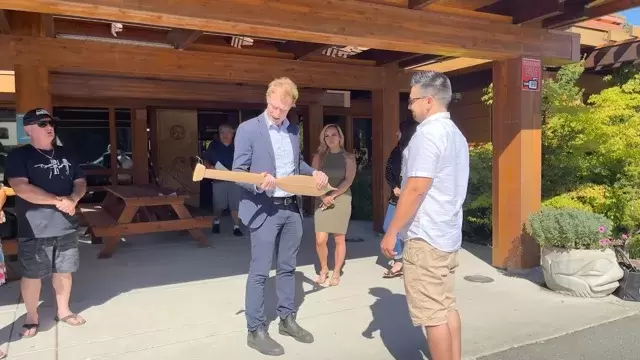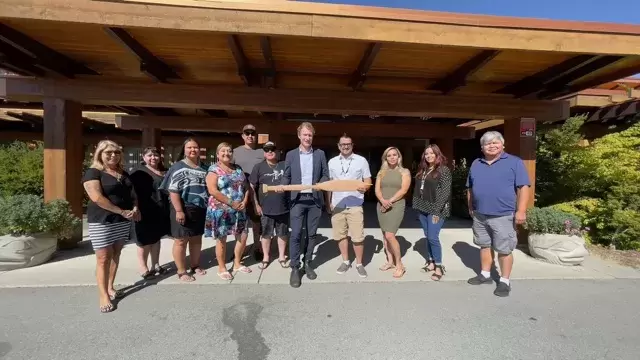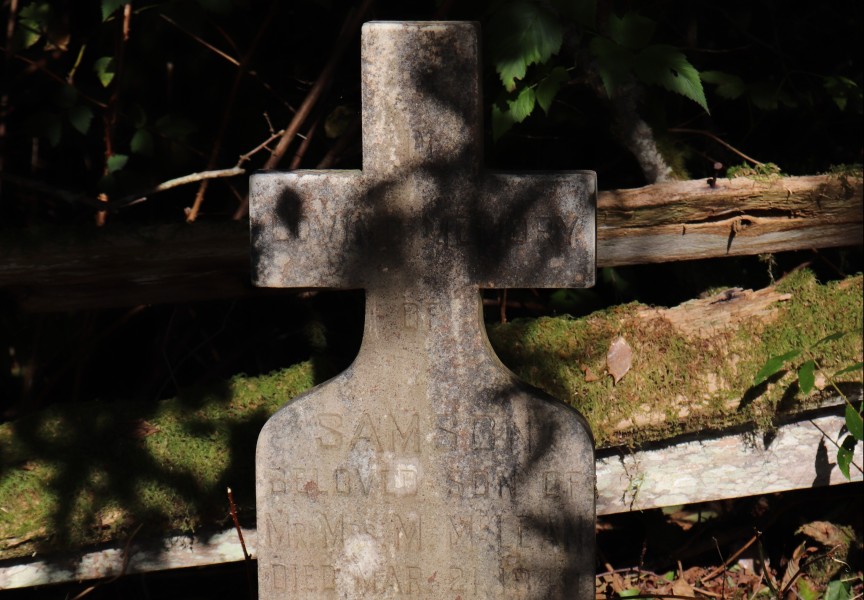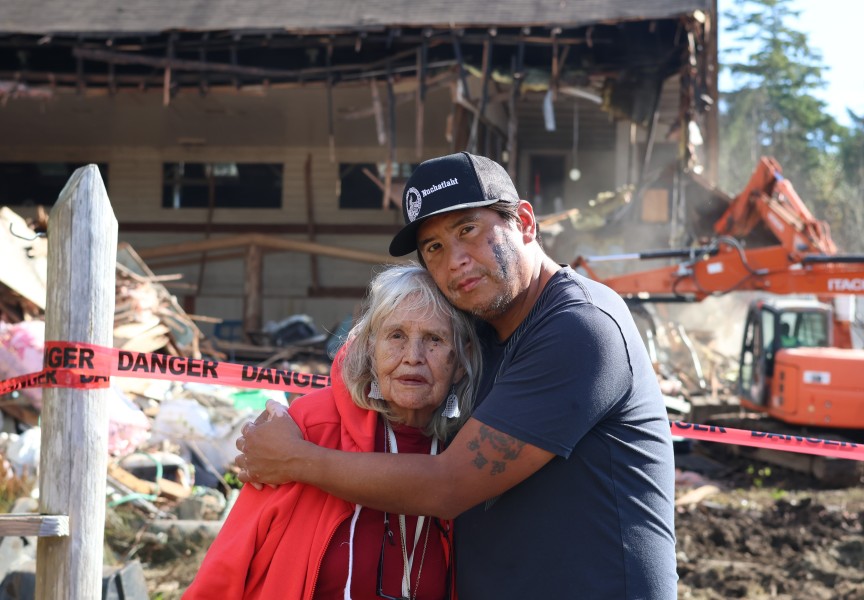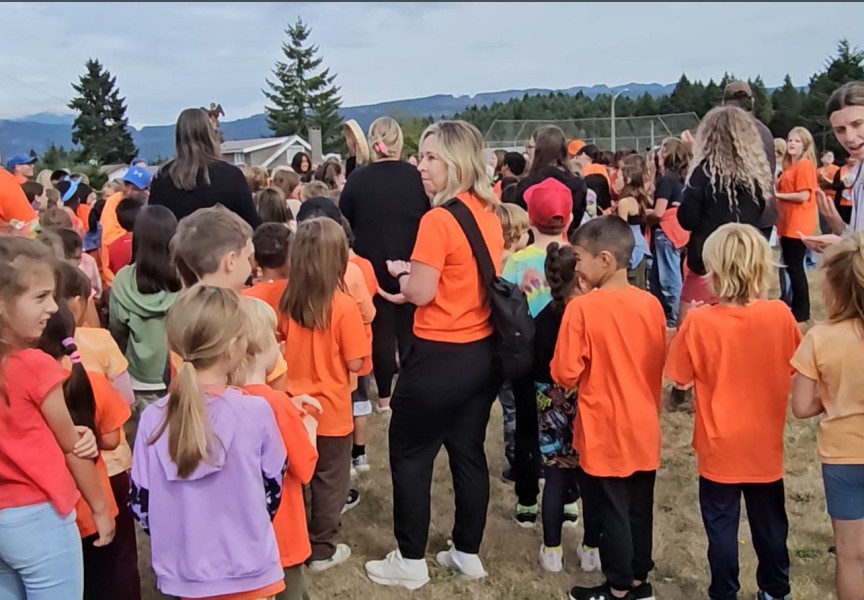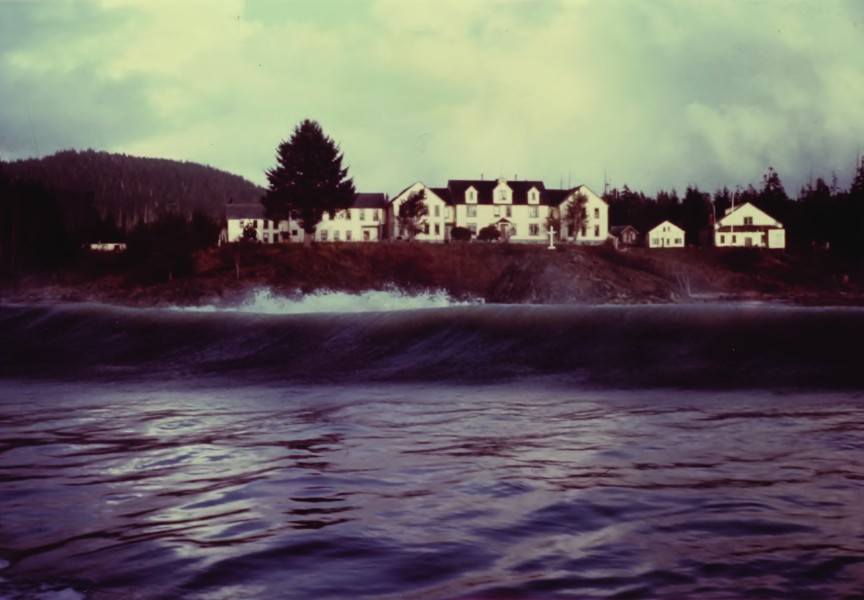As the Tseshaht work to determine the future of a former residential school site, the First Nation’s representatives and other Nuu-chah-nulth leaders received a visit from Canada’s Indigenous Services minister on Wednesday.
Marc Miller was welcomed by Tseshaht hereditary chiefs, followed by meeting with the First Nation’s elected leaders. Foremost in this talk was Tseshaht’s plans for the site of the Alberni Indian Residential School, where two of the institution’s buildings still remain: Maht Mahs gym and what was formerly known as Caldwell Hall.
Miller ventured to the site to step inside Caldwell Hall, which is currently being used by the Nuu-chah-nulth Tribal Council.
“We thought it was important for him to actually set foot in the residential school,” said Tseshaht Chief Councillor Ken Watts. “It just has an energy about it. Some really horrific things have happened there.”
The federal Minister’s visit comes at a time of reckoning for Canada to settle recent painful discoveries at former residential school sites, which began with locating the remains of 215 children in unmarked graves at the Kamloops Indian Residential School in late May.
The Tseshaht plan to employ the same ground penetrating radar that has been used to locate remains at other former institutions. They also aim to formally document all of the schools past students - including those who never returned home. But Watts emphasized that the demolition of Caldwell Hall is a necessity, where the First Nation hopes to replace it with a multipurpose health and wellness building.
“It really meant a lot to let him set foot on the grounds,” said Watts of Miller’s visit. “He knows this isn’t just a little area that we have to deal with. It’s pretty large in scope.”
The future of Maht Mahs, however, may be different.
“It’s such a hub still for our membership,” added Watts, noting that although an eventual replacement is inevitable, the First Nation has yet to hold formal discussions on tearing the gym down. “I think we’ve done a good job at doing our best to change the feeling of that facility, we’ve had so many potlatches and amazing events there, but it still is a part of the school.”
Other topics discussed include the expansion of Haahuupayak elementary to include high school grades, and badly needed on-reserve housing. With no new homes built in over five years, Watts said at least 30 are on a waiting list, although he expects more people who need homes haven’t applied to the First Nation.
“We’re really lacking serviceable lots that are connected to city water and sewar like most of our reserve is. There’s not a lot of space left,” he said, noting that some existing homes have concerning utility connections. “They’re all on ailing septic tank systems that are failing as we speak that could be potential health and safety and safety hazards.”
The shortage of housing is a widespread issue, across Nuu-chah-nulth territory and Canada. A 2016 report from Statistics Canada found that 18 per cent of Indigenous people live in crowded homes, and a 2019 study by the United Nations stated that one in four on-reserve people in the country live in overcrowded conditions.
This issue was stressed to Miller when he sat down with NTC leaders on Wednesday.
“ISC is now funding First Nations based on the number of people on reserve,” said NTC President Judith Sayers. “For Hesquiaht, they’re getting funding for 68 people, when their membership is 750…You can’t encourage people to go home if you don’t have homes.”
Justice concerns were mentioned, with the desire for remote Nuu-chah-nulth communities to have their own police force. This concept has gained attention over the last year, after the shootings of three Tla-o-qui-aht members in different incidents, including the deaths of Chantel Moore in New Brunswick and Julian Jones in Opitsaht.
“We wanted him to make sure that he works with us as First Nations, as we are the only people who know what the needs are in our communities,” said Sayers. “It shouldn’t be just high level working with AFN [Assembly of First Nations] and other organizations.”
Watts said his nation’s needs go beyond just money from Ottawa, but the recognition of the United Nations Declaration on the Rights of Indigenous Peoples.
“It’s not always just about resources, but it’s about jurisdiction, it’s about authority, it’s about implementation of UNDRIP,” he said.
Sayers noted that First Nations’ authority to determine access into their territories was not respected by the provincial government during the pandemic.
“We just really felt the lack of jurisdiction of First Nations in health during COVID,” she added. “It was Bonny Henry and Adrian Dix, they were making all of the decisions and we didn’t have a role.”
With a federal election on the horizon, Watts reflected on how much things have changed since his father, George Watts, was a Nuu-chah-nulth leader. Although more work is needed to recognize Indigenous rights, Miller’s visit highlighted improvements over the last 16 years since his father’s passing.
“They’ve done some significant contributions that I think need to be acknowledged,” said Watts. “To see the amount of money that’s been invested, he wouldn’t have seen that 16 years ago.”

